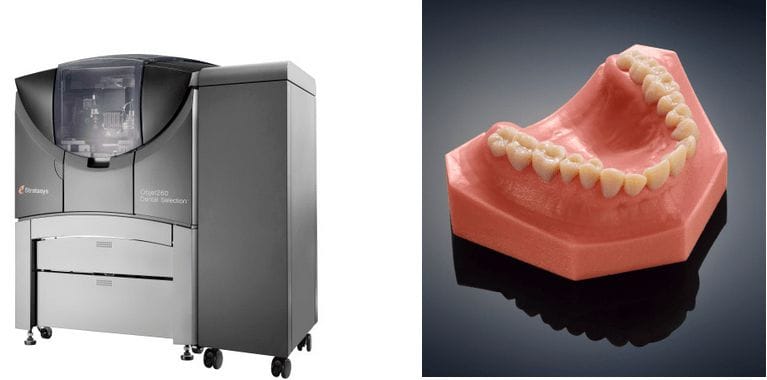
This week there’s an important conference for 3D printing: LMT LAB DAY.
That innocuous name represents what apparently is the largest dental laboratory conference in the USA. As such there are plenty of 3D printer vendors presenting their latest products for that particular industry.
But why the big interest in dental? What is it about that industry that seems to increasingly attract 3D print technology companies?
There are a variety of reasons, but these are my thoughts.
Dentistry is a highly personalized market, as it literally involves the use of appliances that by definition fit only you. That matches the capabilities of 3D print technology very well, which can produce single, custom items on each print job.
The demand for dental work is universal and constant. So long as we use our teeth, we will require dentists and their work. Thus this is a market similar to food where there must always be a guaranteed market.
3D printing is still quite expensive, and so it can be quite financially inappropriate for production of items in many industries. However, dental is not one of them, as traditional dental work can be quite expensive. I suspect the reason for high traditional pricing is simply because the work is, of course, custom, and thus mass production techniques could not be effectively applied to reduce costs to Wal-Mart levels.
This means that dental clients are already accustomed to higher pricing for products, and so 3D printed items have an ability to fit within that financial envelope.
Another financial aspect is that many dental clients make use of insurance programs to pay. This means that the client may not be directly exposed to the high pricing, making it easier to close transactions.
Finally, there many 3D printing companies desperately seeking ways to expand their client bases, particularly those who had ventured into consumer 3D printing a few years ago, only to find there was no such viable market.
This need, combined with the suitability of the dental market, creates a nexus of attraction for 3D print companies.
It’s a rich market that clearly could make very good use of 3D print technologies. The barrier may be only that dental participants may not understand how to make use of the technology, fear its complexity or costs. But those challenges are gradually falling as vendors introduce lower priced equipment and far easier software interfaces.
All this explains why you see so many companies making announcements at “Lab Day” and other dental events. Their goal is to “turn on” lab workers to the possibility of using the technology.
One announcement this week, for example, came from Stratasys, who announced a new variation of their Connex equipment, the Stratasys Objet260 Dental 3D Printer, specifically designed for use by dental operations. The company also announced complementary materials and workflow improvements.
It’s a slow process, however. Those in tech fields tend to keep up to date on the equipment in their area, but that’s not necessarily the case for smaller businesses whose focus is not primarily tech. They’re busy doing their normal business, not spending time investigating radical new ways to do their work.
They need to be shown, hopefully by one of their own, that there are highly feasible and attractive alternative methods to achieve their business goals.
I think we’ll see this affect in a few more industries in addition to dental in coming years.
Via Stratasys

